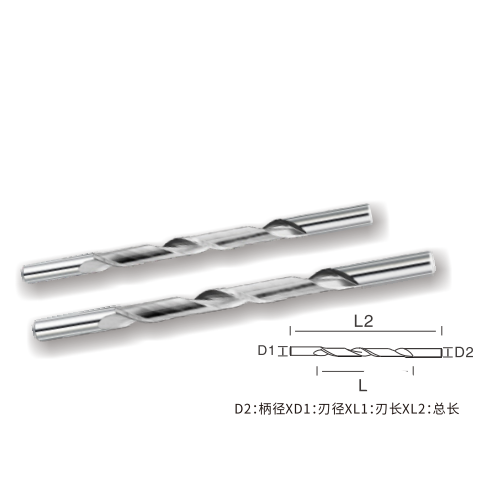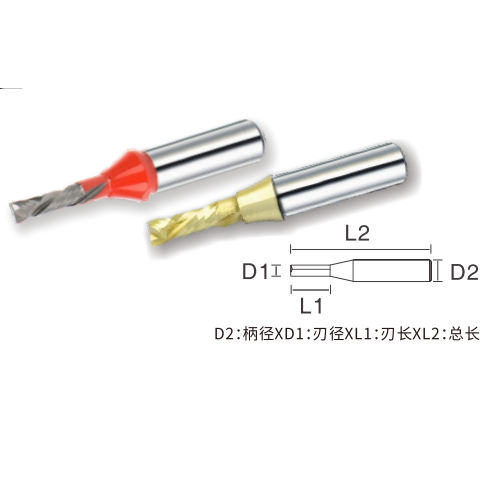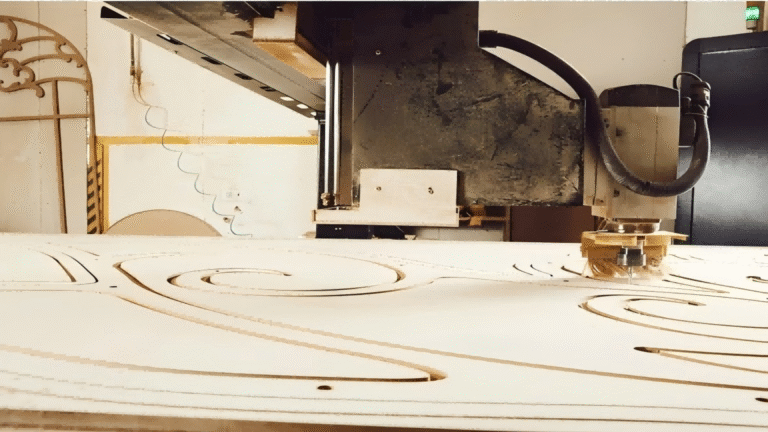Choosing the right CNC router bit is one of the most important decisions in any woodworking project. The tool you select directly affects cut quality, production efficiency, and overall tool life. Whether you’re machining MDF, hardwood, or laminated panels, using the wrong bit can result in tear-out, overheating, and premature wear.
This comprehensive guide explains how to select the most suitable router bit for woodworking, covering key aspects such as material composition, geometry, coating, and speed optimization. You’ll also learn how professional manufacturers like ZC TOOLS engineer precision tools designed for long-term reliability in industrial CNC production.
1. Understand the Material You’re Cutting
The first step in choosing a CNC router bit is identifying the material you’ll be cutting. Different woods and composites react differently to cutting forces, heat, and chip evacuation.
Softwood (e.g., pine, cedar, fir)
Softwoods are less dense and easier to cut, but they can tear or splinter if the bit geometry isn’t sharp enough. Use bits with higher rake angles and sharper cutting edges to achieve clean, smooth surfaces without burn marks.
Hardwood (e.g., oak, walnut, mahogany)
Hardwoods are dense and tough, requiring carbide-tipped bits with a lower rake angle to reduce friction and resist heat. A slower feed rate and proper cooling help prevent dulling.
MDF and Plywood
These engineered materials create more friction and dust than natural wood. Choose spiral bits with a chip-clearing design to minimize burning and edge chipping. Compression bits are ideal for laminated boards, preventing tear-out on both sides.
💡 Example: ZC TOOLS’ tungsten carbide spiral cutters maintain edge sharpness and dimensional accuracy even when processing dense MDF panels over long production cycles.
2. Choose the Correct Bit Type for Your Application

Each CNC router bit type serves a distinct function in woodworking. Understanding their design and purpose helps match the bit to your project’s geometry and finish requirements.
| Bit Type | Description | Best for |
|---|---|---|
| End Mills | Straight or spiral flutes; general-purpose bits for slotting, pocketing, and contouring. | Grooves, edges, and flat-bottom cuts. |
| Ball Nose Bits | Rounded tip; ideal for 3D carving, sculpting, and curved surfaces. | Sign-making, relief carving, molds. |
| V-Groove Bits | V-shaped profile; excellent for engraving, lettering, and decorative patterns. | Signage, logos, and panel detail work. |
| Compression Bits | Combine up-cut and down-cut flutes to minimize tear-out on laminated panels. | Veneered plywood, MDF, composite panels. |
| Up-Cut / Down-Cut Spiral Bits | Up-cut removes chips efficiently; down-cut improves surface finish. | Up-cut for deep pockets; down-cut for clean surface edges. |
➡️ Tip: Always align the bit type with your CNC machine’s capabilities and the finish quality required for your final product.
3. Bit Material: Durability and Performance
The performance of a router bit for woodworking depends largely on its material. Here’s how to choose based on durability and budget:
High-Speed Steel (HSS)
- Affordable, suitable for softwood and plastics.
- Dulls quickly when used on hardwood or composites.
- Best for small workshops or occasional use.
Carbide-Tipped
- Longer lifespan and higher heat resistance.
- Ideal for hardwood, MDF, and laminated materials.
- Excellent choice for continuous industrial use.
Solid Carbide
- Ultimate precision and wear resistance.
- Best suited for high-speed CNC production lines.
- More expensive, but delivers the best long-term value.
💡 Insight: ZC TOOLS uses premium micro-grain carbide to ensure consistent sharpness, stability, and dimensional accuracy across its high-speed CNC cutting tools.

4. Cutting Speed and Feed Rate: Finding the Right Balance
Even the best router bit can perform poorly if the feed rate or spindle speed is set incorrectly. The goal is to maintain an ideal chip load—the thickness of material removed per cutting edge per revolution.
| If Feed Rate Is Too Slow | If Feed Rate Is Too Fast |
|---|---|
| Causes heat buildup and burning. | Produces rough edges and vibration. |
| Dulls the cutting edge prematurely. | Can break the bit or reduce accuracy. |
Balancing these parameters improves surface finish, reduces vibration, and extends tool life.
Professional manufacturers like ZC TOOLS provide reference charts for optimal spindle speeds (RPM) and feed rates (IPM) based on bit diameter and wood density.
✅ General Rule of Thumb:
- Increase feed rate for softer materials.
- Decrease spindle speed for harder materials.
- Always perform test cuts before full production.
5. Coatings and Surface Treatments
Router bit coatings enhance performance by reducing friction, resisting wear, and dissipating heat. Choosing the right coating can significantly extend the lifespan of your CNC router bit.
| Coating Type | Key Benefits | Recommended Use |
|---|---|---|
| TiN (Titanium Nitride) | Improves surface hardness and wear resistance. | General woodworking. |
| TiAlN (Titanium Aluminum Nitride) | Withstands high temperatures, ideal for continuous cutting. | Hardwood and composites. |
| DLC (Diamond-Like Carbon) | Excellent heat resistance, ultra-smooth surface. | High-speed industrial CNC machining. |
💡 Example: Some ZC TOOLS router bits feature diamond coating technology, enhancing durability and cutting precision during long production runs—particularly when working with abrasive materials like MDF or particleboard.
6. Bit Geometry and Flute Design
Flute geometry determines how chips are removed and how heat is managed during cutting.
- Up-Cut Flutes: Best for deep slots, as they lift chips upward for efficient evacuation.
- Down-Cut Flutes: Push chips downward, preventing top surface tear-out.
- Compression Flutes: Combine both directions for clean edges on both surfaces.
💡 Pro Tip: For plywood or laminated boards, compression bits are ideal since they deliver clean finishes on both top and bottom layers—saving post-processing time and material waste.
7. Shank Size and Machine Compatibility
The shank connects your bit to the CNC collet. Using the wrong size can cause vibration, runout, or even bit breakage.
- Common sizes: ¼ inch (6.35mm) and ½ inch (12.7mm).
- Always ensure your collet and bit shank match perfectly.
- Keep collets clean and inspect for wear regularly to maintain tool accuracy.
Improper installation or worn collets can introduce runout, reducing precision and surface quality.
8. Maintenance and Tool Life Optimization
Even the most advanced router bit will wear out over time. Regular maintenance ensures consistent results and reduces replacement costs.
Maintenance Tips:
- Clean bits after every use with resin remover.
- Inspect cutting edges under magnification for chipping.
- Rotate or regrind carbide bits when performance drops.
- Store bits in protective cases to prevent edge damage.
ZC TOOLS emphasizes proper maintenance as part of its complete cutting solution, helping manufacturers extend tool lifespan and achieve reliable, repeatable results across production runs.
9. Environmental and Efficiency Considerations
Modern woodworking operations are focusing more on energy efficiency and sustainability. Using the right CNC router bit contributes to both.
- Efficient chip removal reduces machine load and energy use.
- Longer-lasting carbide bits reduce material waste.
- Precision-cutting reduces scrap and rework.
By combining optimized tool geometry with sustainable manufacturing practices, companies like ZC- TOOLS help woodworking factories achieve both productivity and environmental goals.
✅ Conclusion

Selecting the right CNC router bit is more than just choosing a shape or size — it’s a technical decision that impacts every aspect of your woodworking project. From material hardness to coating type, every factor determines how efficiently your CNC system can cut, carve, or shape.
By understanding your material properties, machine compatibility, and feed rate parameters, you can achieve a perfect balance between precision, speed, and durability.
ZC TOOLS, as a professional manufacturer of CNC router bits, end mills, and precision cutting tools, continues to innovate for global woodworking professionals. Its engineering-driven designs ensure sharper cuts, longer tool life, and consistent results — helping factories around the world achieve cleaner, faster, and more accurate production.



